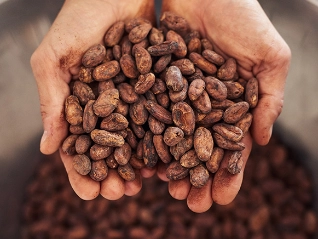
Interim Economic Outlook - March 2025

What the Fed's "Jumbo" rate cut means for the global economy

Economic Outlook for Second Half of 2024: U.S. Inflation, Debt, Consumer Spending, Geopolitical Tension in 2024


Discover how the global economy is navigating trade tensions and uncertainty, with AI investment driving resilience and shaping growth prospects for 2026 and beyond


Industry growth slows as global trade applies the brakes

US tariffs, geopolitics and lower demand trigger a contraction of global automotive production in 2026

Tari...

Pharmaceuticals businesses throughout the world are reviewing their operational and...

Chemicals production growth projected to slow in 2025/2026 due to US tariffs

Trade tensions trigger higher insolvencies
Viewing 7 out of 198
Tariffs and tight margins are...


Trade tensions, AI investment and geopolitical shifts dominate the global trade agenda. The key takeaway: business must...

Navigating global payment risk in a year of rising insolvencies and shifting customer behaviour

The US President’s latest tariff threat exposes the weaponised interdependence that has become a flashpoint for...

Our Q3 2025 Risk Map update underscores the widespread nature of country...

The President promised the return of millions of factory jobs, but rising investment pledges masks a mixed picture for US manufacturing

Closer ties could boost trade and create a functioning alternative to the misfiring WTO. But without the involvement...
Viewing 7 out of 226
Credit insurance is often misunderstood. Myths about cost, complexity, and coverage mean many...


Understanding why credit insurance provides broader coverage, strategic risk management and financial stability compared...

How credit insurers evaluate risk and determine appropriate credit limits

Explore how surety bonds and bank guarantees work, their similarities and differences, and what they mean for...

Explore the trade-offs between credit insurance and self-insurance to protect cash flow and...

Globalisation makes market expansion inevitable, but entering new territories remains a complex and...

Credit...
Viewing 7 out of 31
BVV GmbH grew internationally and recognised risks such as companies on the brink of insolvency in plenty of time to mitigate the...


Atradius Surety has enabled Vinci Construction France to expand their sources of finance beyond their...

Incorporating a risk management strategy for business opportunities with Linnea’s

How we are part of Continental Banden Groep B.V.'s business process, minimising risk and supporting sales


With the backing of Atradius’s resources, EnCom Polymers has been able to expand business with existing customers and go...

Providing comprehensive support and ongoing credit monitoring for Legrand AV
Viewing 7 out of 11
Case study
Metalco Inc.: Driving new business with quick communication
Ben Green, President and Owner at Metalco Incorporated in Chicago, Illinois, explains how Atradius Trade Credit Insurance has helped him secure new business confidently.
Read more
































